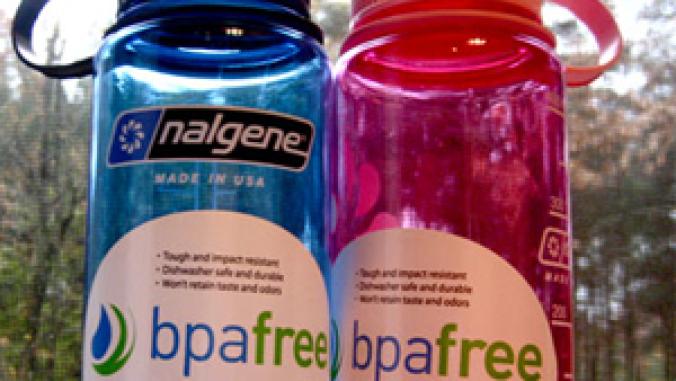California Passes Chemical Regulation Law, EPA Gathering More Health Information
Gov. Arnold Schwarzenegger signed legislation that creates a comprehensive, state-level approach to regulating chemicals, while the EPA continues efforts to gather health and safety information on widely-used substances.

With Gov. Arnold Schwarzenegger's signature on two bills, California has initiated the first of its kind, state-level chemical oversight program.
The legislation gives the Department of Toxic Substances Control the power to set up a framework for dealing with chemicals of concern. Problem chemicals are currently dealt with on a substance-by-substance basis, ending up in sometimes-contentious legislation. Critics of the system say that legislators don't have the ability to become experts on every chemical that can be harmful to humans and the environment, and that legislation is sometimes driven by emotions and lobbying rather than research.
Assembly Bill 1879 gives the Department of Toxic Substances Control until 2011 to set up a science-based process for identifying, evaluating and regulating chemicals, taking into account manufacturing, use and disposal. A panel of scientists will advise the department. The other bill, SB 509, sets up a state-run website to act as a clearinghouse of chemical information directed at consumers.
The bills come on the heels of the state's Green Chemistry Initiative, which has put forth numerous ideas on how to advance green chemistry. The Initiative has brought together a variety of stakeholders for discussions on how to inform consumers about chemicals, alter consumer protection laws, add green chemistry to education and expand similar efforts.
Federal Oversight
The U.S. EPA is also looking to expand chemical oversight efforts, but at the federal level. As part of its Chemical Assessment and Management Program, the EPA is working on a program to encourage chemical companies to provide health and safety information on inorganic high production volume chemicals. Inorganic chemicals are any substances that do not have carbon atoms, and include a broad list with the likes of cadmium, lead, mercury and nickel. A high production value (HPV) chemical is a chemical manufactured or imported in quantities higher than 1,000,000 pounds a year.
The EPA already has gathered information on some 2,200 organic HPV chemicals. The voluntary program for inorganic HPV chemicals would include a two-three year period of gathering data, taking advantage of similar work by the Organization for Economic Co-operation and Development, Canada and the European Union's REACH efforts. The EPA would then begin a prioritization assessment of chemicals.
In addition, the EPA is planning to update the Toxic Substances Control Act Inventory of industrial chemicals, which has more than 83,000 entries, to accurately reflect chemicals in use today by removing chemicals no longer manufactured or imported.
The legislation gives the Department of Toxic Substances Control the power to set up a framework for dealing with chemicals of concern. Problem chemicals are currently dealt with on a substance-by-substance basis, ending up in sometimes-contentious legislation. Critics of the system say that legislators don't have the ability to become experts on every chemical that can be harmful to humans and the environment, and that legislation is sometimes driven by emotions and lobbying rather than research.
Assembly Bill 1879 gives the Department of Toxic Substances Control until 2011 to set up a science-based process for identifying, evaluating and regulating chemicals, taking into account manufacturing, use and disposal. A panel of scientists will advise the department. The other bill, SB 509, sets up a state-run website to act as a clearinghouse of chemical information directed at consumers.
The bills come on the heels of the state's Green Chemistry Initiative, which has put forth numerous ideas on how to advance green chemistry. The Initiative has brought together a variety of stakeholders for discussions on how to inform consumers about chemicals, alter consumer protection laws, add green chemistry to education and expand similar efforts.
Federal Oversight
The U.S. EPA is also looking to expand chemical oversight efforts, but at the federal level. As part of its Chemical Assessment and Management Program, the EPA is working on a program to encourage chemical companies to provide health and safety information on inorganic high production volume chemicals. Inorganic chemicals are any substances that do not have carbon atoms, and include a broad list with the likes of cadmium, lead, mercury and nickel. A high production value (HPV) chemical is a chemical manufactured or imported in quantities higher than 1,000,000 pounds a year.
The EPA already has gathered information on some 2,200 organic HPV chemicals. The voluntary program for inorganic HPV chemicals would include a two-three year period of gathering data, taking advantage of similar work by the Organization for Economic Co-operation and Development, Canada and the European Union's REACH efforts. The EPA would then begin a prioritization assessment of chemicals.
In addition, the EPA is planning to update the Toxic Substances Control Act Inventory of industrial chemicals, which has more than 83,000 entries, to accurately reflect chemicals in use today by removing chemicals no longer manufactured or imported.




